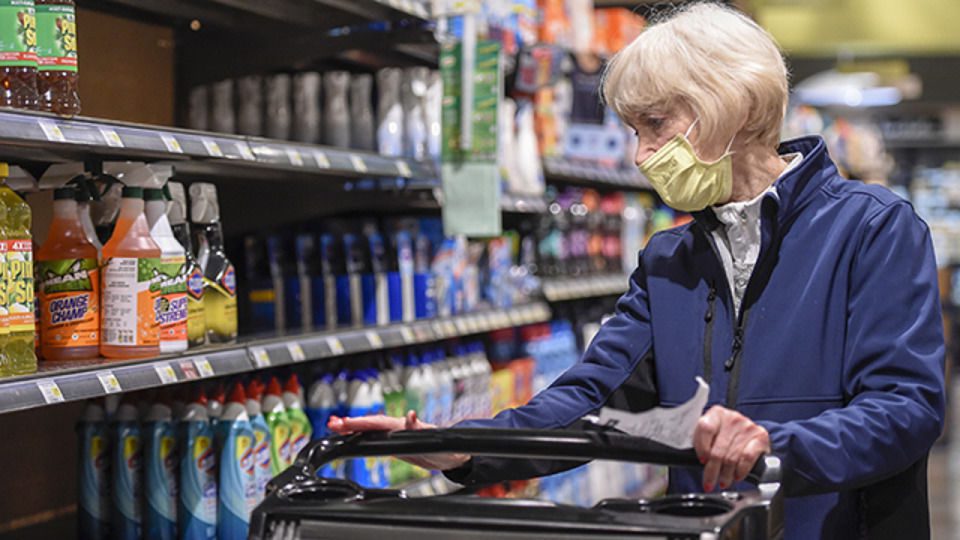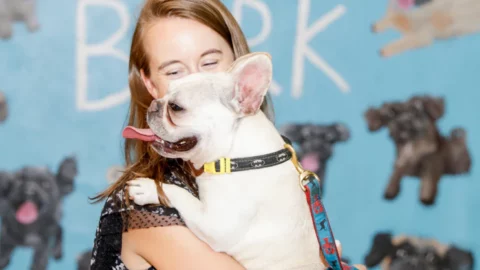Shoppers have slowly begun to accept brick-and-mortar’s return: 22% have increased their willingness to set foot into a grocery store or pharmacy since March, according to data from Resonate. Only 24% planned to increase their online grocery orders in June, while 12% are starting to decrease their online grocery usage.
However, the resurgence in COVID-19 cases may be causing some second thoughts: in May, 90.4% of shoppers would have returned to stores for general merchandise, hardware, clothing, groceries, electronics or dining out, but that share fell to 71.9% in June.
“I think that that people are sort of leaning into the fact that we’re not going to get things to be the way that we want them as soon as we’d like,” said Ericka Podesta McCoy, CMO at Resonate in an interview with Retail TouchPoints. “That’s really impacting what they’re buying. When we looked at the top three attributes people wanted from the products that they’re buying in May, people who thought the economy would open in one to three months were still using words like ‘luxurious’. But by June, luxurious was being replaced by ‘familiar’.”
Since shoppers are understandably wary about returning to brick-and-mortar, retailers need to take special measures and extra precautions to make sure their reopening efforts are successful, including:
Advertisement
- Understanding the possibilities of contactless: Every retail segment will need to introduce contactless options, but touch-focused products like apparel need to go above and beyond;
- Acknowledging the preference for local: Shoppers want to support their local businesses, so larger retailers need to provide them with extra incentives to bring them back; and
- Going beyond basic safety: Masks and sanitation are still vitally important, but making customers feel truly safe will take more than what are now standard industry practices.
Contactless Is Important, But Don’t Let It End At Curbside Pickup
No part of the retail industry will be able to reopen as though nothing has changed, but stores where trying items on has been part of the shopper journey will be among the hardest hit — and these are often places where curbside pickup is a less appealing option. A survey by MySizeID found that:
- 49% of shoppers are uncomfortable shopping in-store for apparel;
- 33% of shoppers are uncomfortable shopping in-store for cosmetics; and
- 18% of shoppers are uncomfortable shopping in-store for shoes.
Not all apparel retailers will be affected equally, however. According to the survey, 35% of consumers will be most comfortable shopping at department stores following the pandemic, whereas only 16% of consumers say they will feel most comfortable shopping at standalone specialty retail stores.
However, these retailers still have ways to draw customers back. When it comes to feeling safe, 27% of shoppers said retailers should hold returned clothing and/or merchandise for 48 hours; 26% want the option to book a properly sterilized, private fitting room in advance; and 18% said retailers should color-code returned clothing based on how long ago the item was returned to make them feel safer about browsing racks.
“Think about novel ways to attract the consumer, and think about how to increase their confidence,” said Ronen Luzon, Founder & CEO of MySizeID in an interview with Retail TouchPoints. “That’s what we need to do in in the retail business — we need to invent ourselves again. There’s no other way to describe it. Take the big players, like Adidas or Nike: 90% to 95% of their income is coming from the offline stores. When these offline stores are closed, they need to reinvent themselves, or if they’ve been affected dramatically, they need to invent a way to attract their customers back. Now is the time for digital and for innovation.”
Local Has Become The Biggest Loyalty Driver, So Increase Incentives
One of the major trends caused by the COVID-19 pandemic is an emphasis on all things local: 49% of consumers surveyed by MySizeID said they will feel most comfortable shopping at small local retailers following the pandemic. Resonate has seen the emphasis on local stores grow steadily from the early stages of the pandemic in March through its June analysis.
“People are definitely looking to shop at local independent stores, and you can almost see people contracting into their community,” said Podesta McCoy. “They’re more tuned in to local news, more concerned with their communities and themselves — there’s a lot of community focus, and I think it’s bled into their shopping behaviors. An interesting data point we saw was a 9 percentage point increase in people focusing on shopping locally, and really caring less about the typical big driver, which is loyalty programs.”
Shoppers have seen local shops with darkened windows for months and feel a personal connection to their struggle, which is driving their preferences as stores reopen. Larger retailers, even those with a strong local presence, will have a hard time counteracting this narrative, so they need to up their loyalty game. Offering bigger rewards on a temporary basis could be a powerful reminder of the value they represent and give local-minded shoppers an incentive to visit.
Masks And Plexiglass Are Table Stakes — Retailers Need To Make Social Distancing Feel Natural
The distribution of protective equipment to associates, the installation of plexiglass shields at registers and the implementation of traffic queues were innovative at the start of the pandemic, but those precautions are now the baseline for operations. In fact, 50% of shoppers will only return to shopping in-store if they see all associates wearing masks and gloves, according to Resonate.
Standing out in a post-COVID-19 environment means rethinking the retail experience and environment. The best retailers aren’t just providing guidelines to keep shoppers safe, though that remains an important part of the reopening process. They’re using the store layout itself to make social distancing feel automatic and unobtrusive.
“I went to the Apple store the other day to get a new keyboard, and the experience there was extremely well-thought-out,” said Paul Conder, VP at CallisonRTKL in an interview with Retail TouchPoints. “When I was there I was thinking, ‘It should have been like this all along.’ They’re using those big tables that they have to serve people over them, which gives you the natural distance, so you’re not guessing around what six feet looks like. The affordances in the space are telling you ‘I’ve got enough room around’ so you never feel crowded.”
Associates also play an important role in this effort. No one knows a store like its employees, and no one is better positioned to help shoppers understand any new practices, so it’s important to give them the tools and authority they need to make retail spaces feel safe and comfortable.
“The staff [at Apple stores] are very well trained to get you inside in a very specific sequence, and also stand at a certain distance once you’re there,” said Conder. “The masks and things are obviously part of it, but I’m always a big fan of using service design first because it gives you that personal touch. It also means that if you’ve got the tone of voice right with your staff, and you train and empower them to deliver great service, they can enforce not just the distance but also the practice of contactless retail.”









